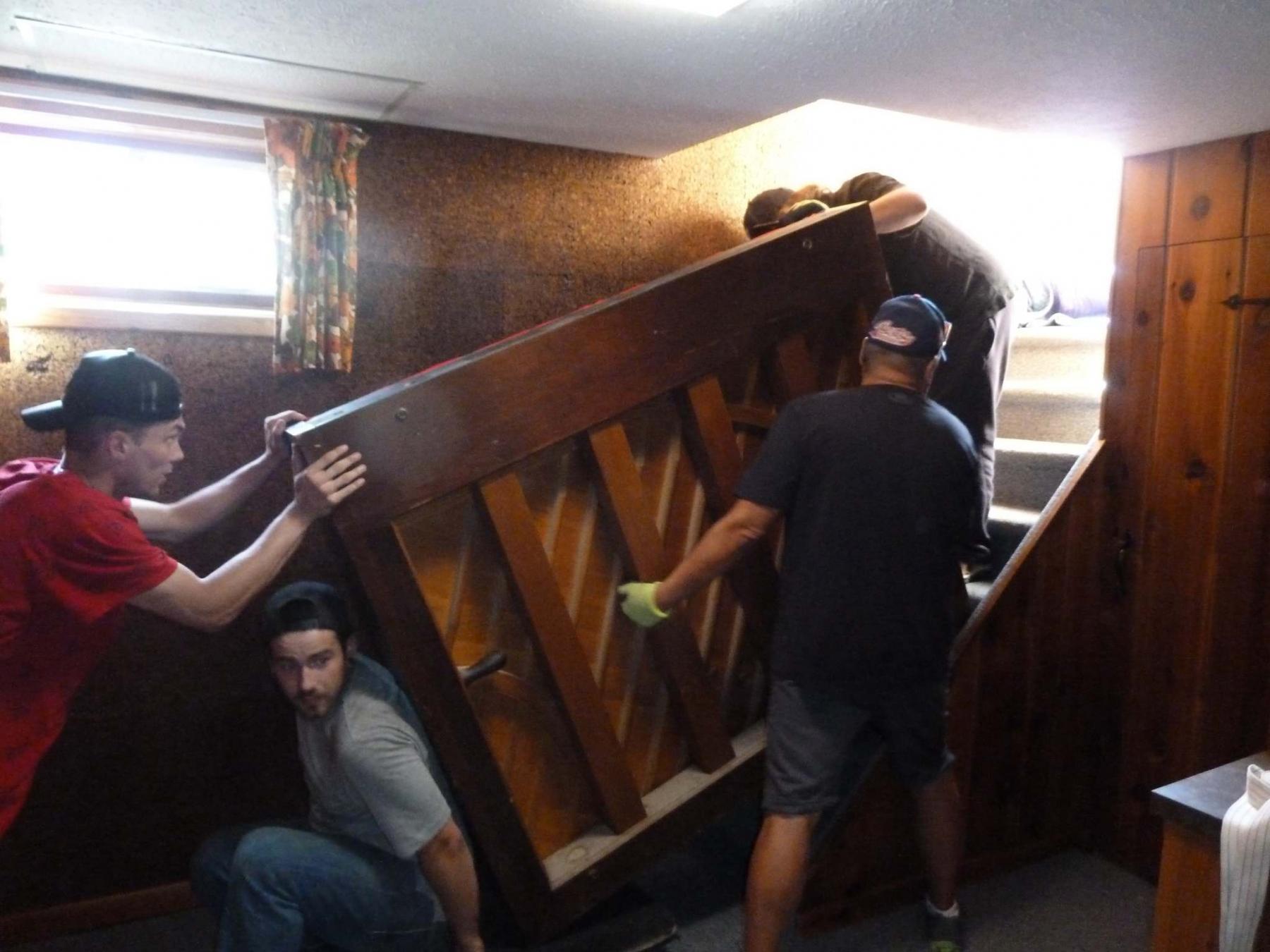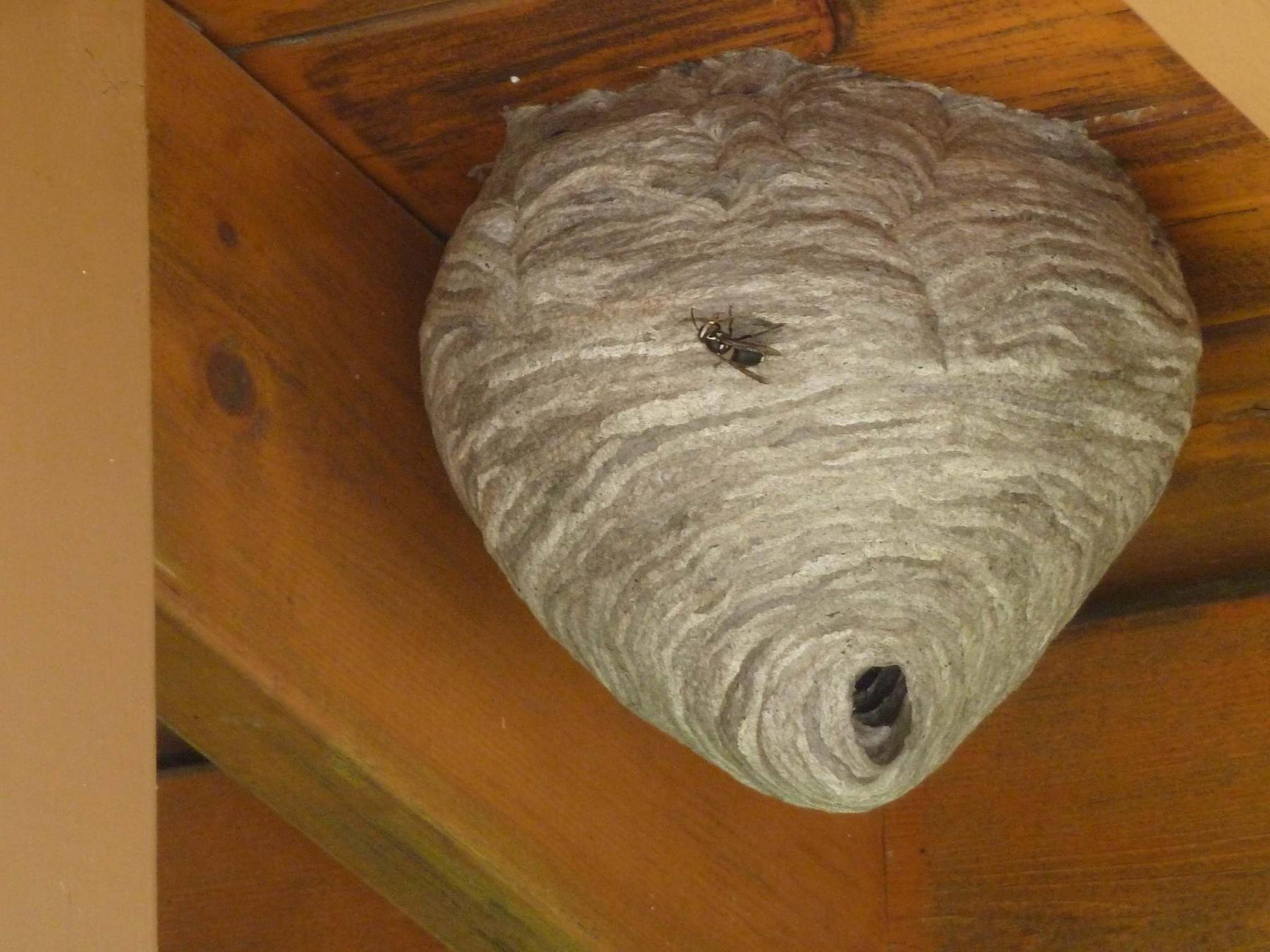Renovation & Design
Renovation & Design
Hire a pro to fix shoddy work
Question: I live in Thunder Bay. A few years ago, I had a backwater valve installed. The pit continuously fills with water and my husband drains it daily. I’ve had a few plumbers inspect it and nobody seems to really know what I can do. They suggest putting in a sump pit to lower the water table and then all the water will go to the pit rather than the backwater valve pit. I never had any problems prior to this pit being installed. The problem is we have floating vinyl floor over the concrete floor and all the new concrete poured over the backwater valve piping seems to seep moisture and cause mould under the floor. The plumber who did the job will not return our phone calls. He also put a bathroom in downstairs for us and we had many problems and had to have another plumber fix it all.
I am wondering if you have advice?
Thanks, Katrina O’Brien
Answer: Poor workmanship by some subtrades is an unfortunate reality in today’s homebuilding or renovation climate. Sometimes you just have to bite the bullet and hire a more experienced contractor to repair or replace the work done by the shoddy tradesperson.
Installation of a backwater valve should be a proper part of installation or retrofitting of a bathroom in a basement. Installation of this plumbing device will require partial breaking up of the basement concrete floor slab, excavation, and patching of the floor where the concrete has been removed. There may be numerous reasons that you are seeing excessive moisture on top of the valve cover and in the concrete and none of them are typical. The most serious could be poor connection of the valve piping to the existing drains, which can lead to waste leaking under the slab. If this has occurred, there is no choice but to break up the floor, once more, and repair the leaking pipe. Left unchecked, this could lead to a health concern with sewer gas infiltrating the living space and waste contamination of the soil underneath the floor.
Another possibility is that your home may have a polyethylene air/vapour barrier membrane installed under the concrete slab. This thin sheathing is installed in homes to prevent soil gasses from entering the basement through the concrete. It also will serve to prevent wicking up of moisture from damp soil under the slab, in homes with high water table or other moisture issues.
Worrying about the exact reason for the issues you are facing may be a bit of waste of time and energy. Since other plumbers have not been able to determine the cause, it is likely hidden under the patched concrete. Unfortunately, the only solution may be to completely redo the original installation, properly, to prevent a reoccurrence. Since you are also having some issues with the new bathroom, an experienced Red Seal plumber should be hired to remove and reinstall the backwater valve and fix the poor workmanship issues in the bathroom, as well.
Another option to think about when repairing the shoddily installed valve, would be to install a sump pit and pump, at the same time. This is often done when a new backwater valve is installed, to prevent flooding of the basement during a sewer back up event during a heavy rainstorm.
It may seem like you are in an unresolvable situation, with no solution to the problems caused by poor workmanship for your basement bathroom by a slipshod plumber. Fortunately, there is a solution, but it likely requires complete removal of the backwater valve and replacement.
trainedeye@iname.com
Renovation & Design
Boil away that nasty black char on pots and pans
Question: I use steel cut oats and often prepare the oats the night before and warm them in the morning. One morning I was in a bit of a hurry and had the stove on too high, and it didn’t help that I happened to use the cheapest pot I have because it is the perfect size. Is there a way to remove the black char on the bottom of the pot? Thank you very much. Arlin
Answer: Soak the pan with dishwasher detergent and hot water for a couple of hours, scrub with a steel wool pad. Or (and this is what I like to do) into the pot pour a generous amount of baking soda, dish soap and enough vinegar to fill the pot a half-inch full. Boil the contents for five minutes. Turn off stove. Let sit just until cool enough to handle and scrub with an SOS pad. Some people use oven cleaner for this purpose and leave it overnight, but I prefer baking soda.
Question: I’ve been reading new recipes and have come across some words that I can’t wrap my brain around. What is the difference between broth, bouillon and stock? Submitted by: Hank
Answer: Broth and bouillon are words that are interchangeable. Traditional stock is made with vegetables, bones and liquid, with no seasonings. Stock is not a finished product and is typically added to soup and/or sauces. Broth is the liquid in which the bones have been cooked and it is typically seasoned. Broth may be served as is, for example consume soup. Vegetable broth is the same as vegetable stock.
Question: How will I get diesel fuel odour out of upholstered boat cushions that have foam inside of the material? Marjorie
Answer: Begin by cleaning the cushions with dish soap and water. Blot the entire cushion and lay on the grass to air dry. When the cushions are dry, purchase heavy-duty garbage bags and put one of the cushions inside of the bag with a few dryer sheets or cotton balls soaked with vanilla or coffee. Use your vacuum nozzle to suck out all of the air in the bag. Close the bag and leave for a day or two. Remove cushion and repeat steps with the next cushion.
Save some dough
— Don’t throw away extra hot dog buns, day old bread or bread ends. Instead collect them in an ice cream bucket with no lid. Once dry, tear them into pieces and make vegetable lasagna. Layer frozen vegetables and bread pieces into a greased casserole pan. Sprinkle with garlic powder, onion powder, salt and pepper. Beat six eggs or more and pour over mixture. Let sit for 30 minutes. Bake for 20 minutes. Cheese and meat may be added if desired.
— Dried bread is the best for making bread crumbs, croutons and stuffing.
— Freshly baked bread should be cooled, wrapped in foil and then put into two clear, reusable plastic bags before freezing. This prevents bread from becoming soggy or mouldy. Defrost bread inside plastic bags.
— Keep room temperature bread in a paper bag and leave the cut side down on, your cutting board. Doing this keeps the inside soft.
Note: Every user assumes all risks of injury or damage resulting from the implementation of any suggestions in this column. Test all products on an inconspicuous area first.
Reena Nerbas is a popular motivational presenter for large and small groups, check out her website at: reena.ca.
info@reena.ca
Renovation & Design
Fix small gaps in counters and cabinets with silicone sealant
Question: Our kitchen peninsula tile countertop has been pulling away from an exterior wall progressively for the 20 years since we’ve owned the home. I need to find out why.
We have a two-story home built in 1989. It’s on a slab. We have re-caulked the gap several times over the years. The countertop has an overhang of 13-inches and the gap widens to 1/4-inch as it gets to the edge of the overhang. The cabinets below are not pulling away from the wall. The movement may have slowed down a bit, but there is still a small crack in the caulking, which was replaced three years ago.
I want to update the countertop but need to resolve the problem first.
Thank you, Mrs. John Prohs.
Answer: Movement in certain building materials or fixtures is quite normal and may be due to several factors. The key to preventing a larger issue is keeping up with normal maintenance or small repairs.
It is quite often that I see evidence of cabinets or countertops that are no longer in the exact position as originally installed. There may be one or more causes of this relocation and we will discuss these and possible solutions. But the overriding solution to this issue is keeping up with regular maintenance, or small adjustments, which may completely or partially negate any further problems.
In newer homes I often see a small gap at the backsplash of the kitchen countertop. This may be in any location and I always recommend installation or replacement of the silicone caulking to cover the space to prevent moisture intrusion from the faucet. The counter may never have been caulked, which is often the case with tile counters and backsplashes, which only have grout filling the space along the wall. Tile contractors often leave out the flexible caulking to allow the grout to set, which can lead to small cracks or shrinkage. After several months, this inside corner should be covered with a good bead of colour coordinated silicone caulking. This very flexible sealant should bridge any small gaps, while maintaining its elasticity for several years.
Since your gap is likely larger than what is typically filled with normal caulking, additional steps may be required before completing that task. The first thing to try and ascertain is whether the variable movement is due to the cabinets moving or some other components in the area. Since you have stated that the cabinets have not pulled away from the wall, this may be the first area to verify. Looking under the counter, after removing stored items, should alert you to any imperfections. Since most modern cabinets are modular, they are typically secured to the wall behind with wood screws fastened through a nailing strip at the back, just under the counter. If the fasteners have become loose, or the nailing strip damaged or relocated, then re-securing the cabinets to the wall may solve future movement issues. Contrary to your thinking, this may not be visible as cabinet movement from the outside and may only be properly identified by looking underneath and re-securing the screws with a cordless drill.
Because kitchen cabinets are comprised of wood-based products there is always the possibility of shrinkage or warping of the cabinet components. Since the doors are secured to the sides or gables of the cabinets, and shelving inside is also supported on these components, there is the possibility of movement. It may be as simple as overloading the shelving or drawers, which may move slightly when the heavy contents are moved. Again, this may be cured by re-fastening the cabinets to the walls or adding additional supports.
One area that is often overlooked in thinking about cabinet movement is the floor below the cabinets. Since they are normally well secured to the studs in the wall behind, the surface that they sit on top of may be neglected. To prevent bowing, twisting, or sagging of the cabinets, the bottoms should be properly supported on the floor below, as well. This is typically done by driving small wooden shims underneath the cabinet sides at the same time as the backs are secured to the wall. These shims can slip or move over time and may no longer be properly supporting the base cabinets. This can also be caused by seasonal movement in the footings below the teleposts, which support the beams, which support the floor joists, which support the floor sheathing that that the cabinets sit upon. In new homes this may also be due to shrinkage of the joists or beams, which is normally only seen in the first few years.
The way to diagnose these later issues is to inspect the entire cabinet system with a good level and tape measure. Check to see if the individual cabinets are still plumb and level and from corner to corner with the tape to ensure they are square. If either of these parameters are substantially off, further repairs are required. These may include driving additional shims under the cabinets at various points. In more extreme cases, fasteners holding the individual modules together may have to be removed and reinstalled once the units are plumb and square. These final repairs can certainly wait until it is time to install the new counter, which should be more easily accomplished immediately after removing the old tile top.
Periodically installing new silicone sealant to fill the small gap between your kitchen countertop and wall may be enough to minimize problems due to typical seasonal movement. If more movement is seen, further securing or repairs to the cabinets may be required before installing a new top.
Ari Marantz is the owner of Trained Eye Home Inspection Ltd. and the past president of the Canadian Association of Home & Property Inspectors — Manitoba (cahpi.mb.ca). Questions can be emailed to the address below. Ari can be reached at 204-291-5358 or check out his website at trainedeye.ca.
trainedeye@iname.com
Renovation & Design
Everything is better when you add a little butter
Question: Many of my recipes call for unsalted butter, but often when I am at the grocery store I notice only salted butter is available in no-name brands and therefore less expensive. What is the difference between using salted and unsalted butter in cookie recipes? Brittney
Answer: Most people would not recognize the difference between cookies baked with salted or unsalted butter. Salt is added to butter to extend its shelf life and therefore stores tend to carry a larger variety of salted butter. If you decide to use salted butter when baking cookies, simply skip the salt called for in the recipe. Unsalted butter is typically listed in cookie recipes so that the baker can control the amount of salt going into the cookie.
If you ever notice that your home baked cookies (baked with butter) flatten and spread way too much while baking, consider using half butter and half margarine in the recipe instead of all butter, this will give you a really nice texture and cut down on some of the cholesterol. Experiment to find the best non-hydrogenated margarine for your recipes.
Question: Three pack Romaine lettuce keeps well in the original package in the crisper, but after it is washed and kept in a container in the refrigerator, the ribs and some of the leaves turn brown. What is the reason for this? Sergio
Answer: Browning lettuce edges is caused by enzymes and polyphenols, and when they combine, they oxidize, which turns many fruits and veggies brown. When lettuce is cut or torn the cell walls are damaged and the edges quickly turn brown. To sustain the life of your lettuce once you have purchased it remove leaves from the core, wash and spin. Wrap leaves in paper towels and tuck them inside of a sealable plastic bag. Romaine lettuce turns brown faster than iceberg lettuce.
Question: The sliding doors in my closets glide smoothly until just before they are completely closed. Is there anything we can use so they will close without sticking? Thanking you in advance, David
Answer: A closet door that won’t properly close is often the result of a misaligned door track. Using a screwdriver, tighten the door tracks. If the door still sticks, replace worn roller wheels. If necessary adjust the height of the door using the screws or plane the door. Lastly, replace the guides and the door should easily close.
Note: Every user assumes all risks of injury or damage resulting from the implementation of any suggestions in this column. Test all products on an inconspicuous area first.
Reena Nerbas is a popular motivational presenter for large and small groups, check out her website at: reena.ca.
info@reena.ca
Renovation & Design
Sodium reduced gravy will still float your boat
Question: I bought a package of gravy mix but found it salty, is there anything I can do so it's not as salty? Ashir
Answer: Next time you purchase store bought gravy, look for sodium reduced packages. If the gravy is already cooking in the pot, add a potato to the gravy to absorb some of the saltiness. Another option is to add milk, sodium reduced broth or water to dilute the flavour. If this is the case combine flour or cornstarch with the liquid while it is still cold before adding it to the gravy, so that the gravy thickens.
Question: I have a tricky, sticky situation and as I read your column regularly, I thought you might be able to help. I had a tenant in my suite for the past year and he has now passed on. My problem is that he left the sink in such a state that I had to replace it. It was completely coated in tar, as are the pipes below. I have replaced the sink, but the pipes still reek of tar and I cannot have anyone back in the suite until I get rid of the smell. Have you any ideas of how I might clean the residual tar out of the pipes and get rid of the smell of tobacco? Thanking you in advance, Tammy
Answer: Begin with this easy method of cleaning the drain: Pour one-cup vinegar into the drain, chase with one-cup baking soda. Plug the drain and fill the sink with hot water (do not leave water in sink if small children are in the home). Leave overnight and in the morning, drain and pour hot water down the sinkhole. If the odor remains; clean the drain with a commercial product such as Drano, use according to the directions. If you still notice an odor; turn off the water and place a pail under the U-shaped pipe under the sink. Remove the pipe from the drain. Using a baby bottle brush, thoroughly scrub with vinegar, dish soap and water. Replace the pipe and turn the water back on.
Question: Often a recipe calls for a half teaspoon of lemon zest. The rest of the lemon goes into the garbage. If I was to zest the whole lemon and juice, can lemon zest and lemon juice be frozen? What is the best way to do that? Katharina
Answer: You never need to throw fresh lemon into the garbage. Either grate the entire lemon rind (excluding the stem) and place the zest into a sealable container and freeze (the juice also freezes well). Or zest as much as you require and put the remainder of the whole washed lemon into a sealable freezer bag or container. Close the seal and place the container with the lemon, inside the freezer. Whenever you require zest, take the lemon out and use your grater to zest as much as you need of the frozen lemon. Place the remainder back inside the container/bag and into the freezer for next time.
Note: Every user assumes all risks of injury or damage resulting from the implementation of any suggestions in this column. Test all products on an inconspicuous area first.
Have a great suggestion or tip? Please send an email at: info@reena.ca. Reena Nerbas is a popular motivational presenter for large and small groups; check out her website: reena.ca.






